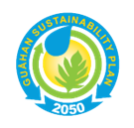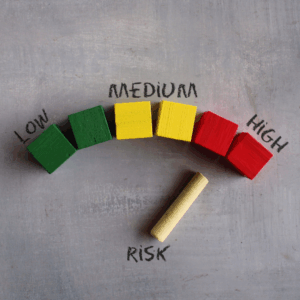
The Bureau Statistics and Planning (BSP) - Guahan 2050 Sustainability Plan

Background
This project includes a need for comprehensive sustainability planning in Guam due to unprecedented pressures from social, cultural, demographic, environmental, and climatic changes. The core focus is to determine what Guam should look like by 2050, considering social, ecological, cultural, and economic goals, as well as associated costs and tradeoffs.
The Lynker Team—comprising Lynker, Hamer Environmental, Market Research and Development (MR&D), U.C. Santa Barbara’s Ocean and Coastal Policy Center (OCPC), GHD, and Pacific Coastal Research and Planning (PCRP)—proposed to develop the Guåhan 2050 Sustainability Plan. This effort is mandated by P.L. 35-110, requiring Guam’s Bureau of Statistics and Plans (BSP) to create a strategy that balances economic, cultural, and environmental concerns for long-term island sustainability.
Key Elements of the Proposal Include
- Unified Vision: Developing a shared vision and guiding principles for Guam’s sustainable future, with a focus on durable land-use planning and economic prosperity.
- Data Gathering: Collecting information on social, economic, environmental, and legal trends.
- Document Review: Identifying gaps and areas of alignment in existing plans and documents.
- Action Strategies: Crafting integrated strategies for each plan element.
- Governance Model: Recommending an effective governance framework for implementing and evolving the sustainability plan over time.
The team highlights their Pacific-based expertise and local knowledge, positioning them as a capable partner to help Guam achieve the United Nations’ Sustainable Development Goals and improve the quality of life for its residents.
The conceptual framework for the Guåhan 2050 Sustainability Plan involves a comprehensive socio-environmental planning approach across five domains: environment, economy, infrastructure, cultural/social, and governance/political. The planning process emphasizes an integrated approach among Guam’s governmental departments, agencies, and other entities to ensure cohesive planning and implementation efforts.
Key Tasks Include
- Policy and Resource Inventory Collection:
- Market Research and Development (MR&D), supported by the UCSB Ocean and Coastal Policy Center (OCPC) and Lynker, will compile and analyze existing policies and planning documents. They aim to develop a policy mapping guidance document to identify decision points and barriers to achieving the objectives of the sustainability plan.
- The team plans to conduct interviews with key governmental agency representatives involved in permitting development projects. Insights from these interviews will lead to a roundtable discussion to confirm agreements, identify unresolved issues, and solicit recommendations for improving the permitting process and overall planning regulations.
- Market Research and Development (MR&D), supported by the UCSB Ocean and Coastal Policy Center (OCPC) and Lynker, will compile and analyze existing policies and planning documents. They aim to develop a policy mapping guidance document to identify decision points and barriers to achieving the objectives of the sustainability plan.
- Conduct Community Charrette and Strategy Design:
- MR&D will partner with Ruder Integrated Marketing Strategies (RiMS) for public relations and outreach. They plan to organize charrettes in all 19 villages to gather community insights and foster enthusiasm for the sustainability plan. These charrettes will help articulate each village’s vision for the sustainability plan.
- Lynker, Hamer, and OCPC will assist in designing these community engagements, ensuring effective participation and capturing valuable feedback.
- The team will maintain communication with the community through BSP’s guidance, potentially including updates to BSP’s website, social media initiatives, and various informational materials to keep the public informed about progress and developments in the sustainability plan.
- The planning process for the Guåhan 2050 Sustainability Plan includes several essential tasks, designed to engage the community, ensure transparency, and create a cohesive vision for Guam’s sustainable future. Here are the key activities outlined in this process:
- Testing Hypotheses: A set of vision hypotheses will be presented and tested across the 19 charrettes. Any disagreements or areas of divergence will be addressed through six focus groups, representing stakeholders from different regions of the island. These focus groups will ensure a broad representation of views on the sustainability plan.
- Island-wide Survey: A survey of 1,000 randomly selected residents (both landline and mobile phone users) will be conducted to gauge public opinion on the plan’s vision and goals.
- MR&D will partner with Ruder Integrated Marketing Strategies (RiMS) for public relations and outreach. They plan to organize charrettes in all 19 villages to gather community insights and foster enthusiasm for the sustainability plan. These charrettes will help articulate each village’s vision for the sustainability plan.
- Develop the Narration of the Guåhan 2050 Sustainability Plan
- Vision Creation: The vision for the plan will be developed based on data from the charrettes, focus groups, and the island-wide survey, as well as previous research from BSP.
- Consistency with Global Goals: The vision will align with the Programme of Action for the Sustainable Development of Small Island Developing States (SIDS) and the United Nations’ Sustainable Development Goals (SDGs), ensuring Guam’s sustainability plan is in line with global sustainability efforts.
- Design Performance Goals: The team will develop community design performance goals to visualize the outcomes of the sustainability plan. Renderings of these outcomes will be shared with BSP and the public, as appropriate.
- Transparency: The planning team emphasizes transparency and regular communication with the public throughout the process, ensuring public input is considered and feedback is continuously provided.
- Vision Creation: The vision for the plan will be developed based on data from the charrettes, focus groups, and the island-wide survey, as well as previous research from BSP.
Projects & Insights:
- All
- About MR&D
- Brand and Style Guide
- Focus Groups
- Industry-Level In-Depth Interviewing
- Innovation & Knowledge
- Market Research & Development
- Marketing & Consulting Services
- Media Study
- Mystery Shopping
- Qualitative Research
- Quantitative Research
- Strategic Facilitation
- Strategic Planning & Consultation
- Survey
We'd love to speak with you about developing your business!
Email our team
admin@mrdmicronesia.com




